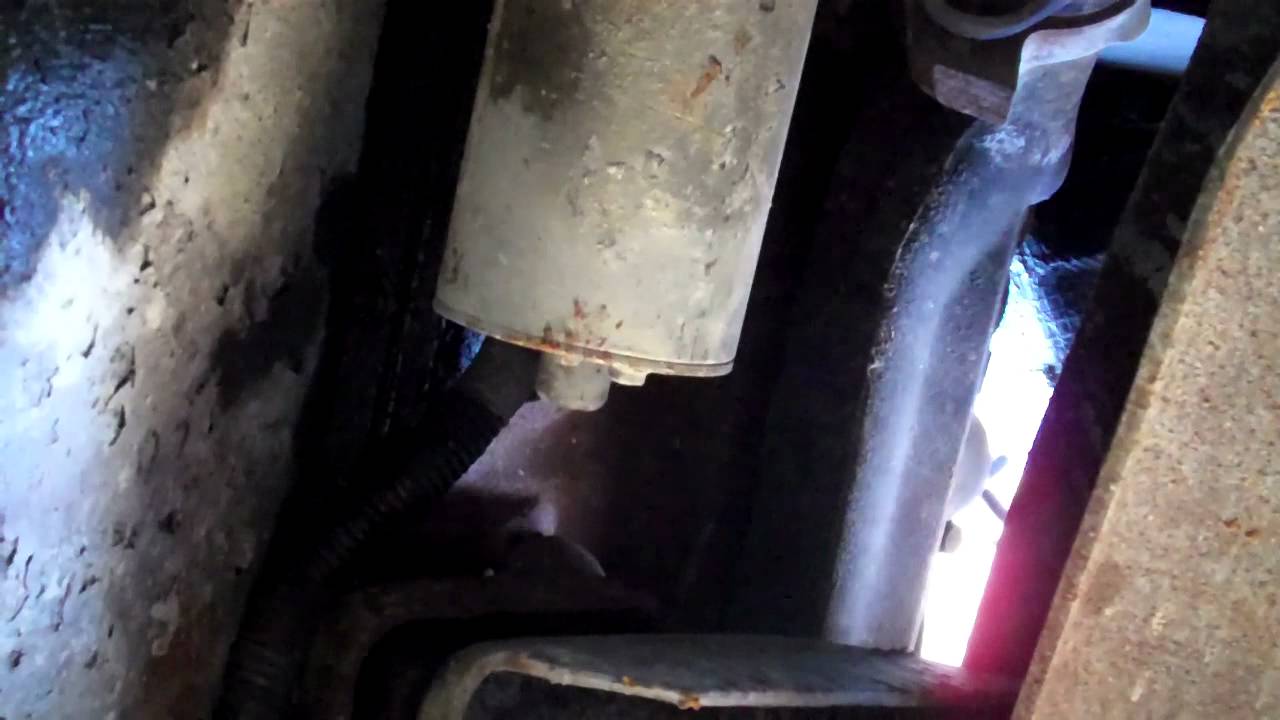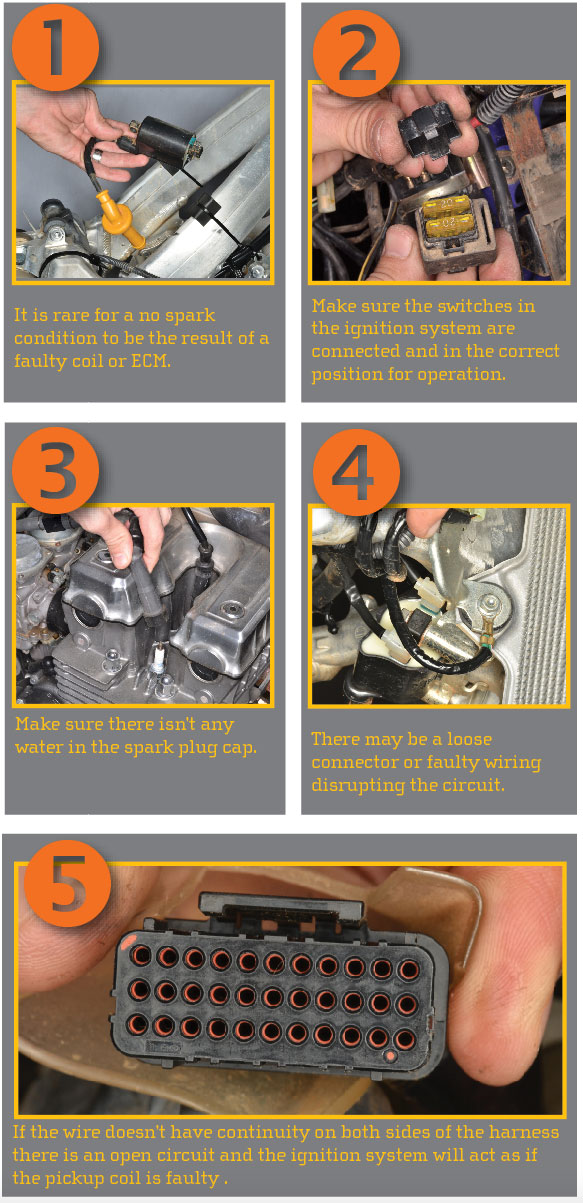How Do You Hit a Starter to Make It Work?
To make a malfunctioning starter work, sometimes a firm tap with a hammer can help. Ensure that you strike the starter body gently, avoiding the solenoid.
Car maintenance can be both challenging and rewarding, especially when simple tricks can save a trip to the mechanic. Out of all the components under the hood, the starter motor is crucial, as it sets your engine in motion. Occasionally, starters can fail, leaving you stranded and frustrated.
A common temporary fix involves a light tap on the starter, which might seem unconventional to a new car owner. This tactic, known colloquially as ‘percussive maintenance’, can sometimes dislodge internal parts stuck due to dirt or free gear teeth that are slightly misaligned. It’s a workaround that car enthusiasts and seasoned mechanics know well. Although it’s not a permanent solution, understanding this method could be handy in urgent situations and is part of a wealth of knowledge among DIY repair tips.

Credit: www.reddit.com
Introduction To Starter Motors
Introduction to Starter Motors
Think of the starter motor as the heartbeat of your car’s engine. Without it, the engine won’t come to life. This small but mighty component works silently under the hood each time you turn the ignition key. Today, we dive deep into its world, revealing the critical role it plays and the nuts and bolts that make it tick. Knowledge of starter motors is vital. It can save you from being stranded with a car that won’t start.
Essential Role in Engine Ignition
Essential Role In Engine Ignition
The starter motor has one job: to kick off the engine’s operation. When you twist the ignition key, the starter motor spirals into action, setting the engine’s gears in motion. This movement creates the necessary power to ignite the fuel and air mixture. Voilà! The car roars to life. Without this initial push, the engine remains silent and immobile.
Basic Components
Basic Components
A starter motor may seem complex, but it boils down to a few key pieces:
- Electric Motor: This is the muscle, turning electrical energy into mechanical power.
- Solenoid: A switch that safely connects the motor to the battery’s energy.
- Pinion Gear: This gear meshes with the engine’s flywheel to turn the crankshaft.
- Drive Mechanism: It ensures the pinion engages with the flywheel accurately.
Each component plays a pivotal role in ensuring your engine starts smoothly. Familiarity with these parts can help you identify starter motor issues and communicate effectively with mechanics when needed.

Credit: www.youtube.com
Symptoms Of A Failing Starter
Is your car reluctant to start? This might signal a failing starter. Recognizing the symptoms early can save you time and money.
Unusual Noises When Turning Key
When you turn the key, expect a smooth engine start. If you hear odd sounds, pay attention. Here’s what to listen for:
- A loud click – The starter gear might not engage.
- Grinding noise – Starter gears could be worn out.
- Whirring – The starter might spin without engaging the engine.
The Engine Won’t Turn Over
An engine that won’t start is a clear sign. This symptom demands immediate attention. Consider these points:
| Condition | Meaning |
|---|---|
| Silent reaction | Electrical issue or dead starter |
| Sputtering start | Starter struggles to turn the engine |
The Percussive Maintenance Method
The Percussive Maintenance Method might sound like a rock band, but it’s actually a last-ditch technique to fix starter issues in vehicles. Picture this: turning the key only to be greeted by silence. The engine doesn’t purr to life. Before panic sets in, some drivers might remember a trick – a well-placed tap on the starter. This approach, sometimes known as a mechanic’s tap or layman’s tune-up, can dislodge internal debris or re-establish electrical connections, getting a faltering starter to engage once more. Read on to learn how to give your starter that potentially lifesaving nudge.
Safety Precautions Before Attempt
Before giving your starter a tap, practice safety first:
- Turn off your vehicle.
- Pop the hood and locate the starter.
- Ensure the car is in ‘Park’ or ‘Neutral’ gear.
- Use protective gear like gloves and eyewear.
- Keep metal tools away from battery terminals.
The Right Way To Tap A Starter
Don’t just hit the starter indiscriminately:
- Identify the starter—usually on the lower side of the engine.
- Lightly tap the starter with a hammer.
- Don’t strike hard; gentle taps suffice.
- Check if the engine starts after tapping.
Remember, the goal isn’t to pound the starter into submission but to give a calculated tap that can make a real difference.
Troubleshooting The Starter
When you turn your key and the car does not start, it’s time to trouble the starter. Fast car fixes sometimes start with a little troubleshooting. Knowing what to check saves time and money. This guide explores common starter issues and how to address them.
Checking Electrical Connections
Starter problems often stem from bad connections. Loose or corroded wires stop the electricity flow to the starter. Here are steps to ensure proper electrical connections:
- Disconnect the battery before inspecting to prevent shocks.
- Check wiring to the starter for looseness or damage.
- Clean corrosion from terminals with a wire brush.
- Make sure all connections are tight.
Reconnect the battery after inspection. Try starting the car again to see if the issue is resolved.
Battery And Solenoid Inspection
The battery and solenoid are crucial for starting your car. These components can fail, so inspect them carefully:
- Test the battery with a voltmeter to ensure it has enough power.
- If power is low, it may need charging or replacing.
| Battery Status | Action Required |
|---|---|
| Fully Charged | Test Solenoid |
| Low Charge | Charge or Replace |
After battery checks, focus on the solenoid:
- Listen for a clicking sound when starting the car, indicating a working solenoid.
- No sound may mean a failed solenoid, requiring replacement.
Follow these simple steps to get your car starting smoothly again.
Professional Repair Vs. Diy
Dealing with a faulty starter can be a real headache. Deciding whether to tackle the problem yourself or call in a pro is crucial. This section will explore the pros and cons of professional repair versus doing it yourself. Let’s dive in and discover the best route to get your starter working smoothly again.
When To Call A Mechanic
If your automotive knowledge is limited, it’s wise to consult a professional. Here are scenarios when dialing the mechanic is the best move.
- Lack of Tools: Missing the right equipment means it’s mechanic time.
- Electrical Concerns: If wiring is involved, pros handle it best to avoid further damage.
- Under Warranty: Your car under warranty? A certified mechanic should do the work.
- Safety Risks: Unsure about safety? Avoid risk and let professionals fix it.
Considerations For Diy Repairs
Feel confident in your abilities? Here are key considerations before you start:
- Manual Check: Always consult your vehicle’s manual to ensure compatibility.
- Diagnosis: Confirm it’s the starter that’s the issue to avoid unnecessary work.
- Time Investment: Have enough time set aside as delays can leave you without a vehicle.
Keep these tips in mind, and you could save money and gain satisfaction from fixing the problem yourself.
Preventive Maintenance For Starters
Maintaining your starter motor is crucial for reliable vehicle operation. A well-maintained starter ensures your car fires up quickly each time you turn the key. Explore preventive maintenance tips to keep your starter in top condition.
Regular Vehicle Check-ups
Regular check-ups play a pivotal role in starter health. Ignoring these can lead to costly repairs. Consider these tips:
- Check battery connections for corrosion.
- Ensure cables are tight and secure.
- Listen for unusual noises when starting the engine.
- Seek professional inspection if your car hesitates to start.
Lifecycle Of A Starter Motor
A starter motor’s lifespan can vary. Factors like driving habits and environment conditions affect it. Get familiar with these lifecycle stages:
- Initial period: Efficiency is at its peak.
- Mid-life: Performance may dip slightly.
- End-of-life: It may fail to engage or wear out.
Replace the starter before it reaches the end-of-life stage to avoid unexpected troubles.
Frequently Asked Questions For How Do You Hit A Starter To Make It Work?
Can Tapping A Starter Motor Help?
Tapping a starter motor can temporarily fix a bad solenoid or free up sticking parts. Gently strike the starter with a hammer to jolt the mechanism. This method isn’t foolproof and can damage components if overdone.
What Signs Indicate A Failing Starter?
Symptoms of a failing starter include a clicking sound without engine start, intermittent issues with engine cranking, or no sound at all when attempting to start. These signs suggest the starter may need inspection or replacement.
How Can I Test My Car’s Starter Performance?
To test a starter, observe how the engine cranks. If it’s slow or uneven, there could be an issue. For a more technical check, use a multimeter to measure voltage at the starter while cranking.
Will Jumpstarting Help A Bad Starter?
Jumpstarting won’t typically fix a bad starter, as the issue is mechanical. However, if the problem is due to a weak battery, jumpstarting could help the engine to crank and start temporarily.
Conclusion
To recap, addressing a faulty starter requires caution and precision. Tap gently, check connections, and consider professional help if necessary. Remember, your safety is paramount — never compromise it. With the right approach, your starter should spring back to life, ready to power your journeys once more.
Keep these tips handy for a stress-free fix!





